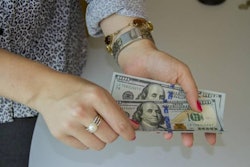
If you attend any pet trade shows (Global Pet Expo, Interzoo, Zoomark, SuperZoo, etc.), you likely have noticed that many new pet food products have health and wellness-related branding and claims, answering consumer desires to feed their pets similarly to how they feed themselves. Now we have data to back up what we see anecdotally: More than 80 percent of global pet food new product launches from September 2015 to September 2016 were marketed on some sort of “health platform,” according to Innova Market Research.
That was up from just below 75 percent in the preceding year, so the trend keeps growing. In fact, in the US, up to 90 percent of new pet food products carry health-related claims, Innova says, with many products having multiple claims.
Considering that dog food comprises 60 percent of global pet food sales, it’s no surprise that health-related claims are especially prevalent on new dog food products: 80 percent of global launches and 86 percent of US launches in 2015. (Innova’s latest report, covering launches from September 2015 to September 2016, does not break out the health-related new pet food products by category.) The shares for cat food were 68 percent globally and 72 percent in the US.
Tracking human food trends
With humanization and premiumization now established as the foundations for pet food product development, we know pet parents are seeking healthy, nutritious products for their furry family members as much as they do for their human ones. Again, Innova’s data supports this market movement, though the research firm doesn’t seem to track pet food claims in the same manner it tracks claims on new human food products.
“In the US, nearly 53 percent of launches used ‘natural’ and/or ‘no additives/preservatives’ claims, driving forward interest in natural and organic formulations,” says Innova’s latest report on new pet food products. The previous year, that figure was at 50 percent in the US and 35 percent globally.
On the human food side, Innova focuses on clean and clear labels, a trend encompassing claims such as natural and no additives or preservatives. For 2016, it was the top trend in human food product launches, showing double-digit increases globally and reaching as high as 37 percent growth in Latin America. In Australia, more than 50 percent of new food and beverage products launched in 2016 carried that type of claim.
Innova even extends the clean and clear concept into the supply chain for human foods, tracking claims such as environmentally friendly or ones related to animal welfare. From 2011 to 2016, new human food products with those claims rose 72 percent and 45 percent, respectively.
These types of claims are gaining traction in pet food, too. While Innova doesn’t cite them (or seem to track them, at least not yet), GfK has noted the growing popularity of label claims such as humane and sustainable on pet food products in the US pet specialty channel.
All about the protein
High-protein claims provide another parallel between human food and pet food product launches. In human food, Innova’s data shows consumers globally leaning toward products with alternative, non-meat sources of protein, but they still want their protein. (A new report on protein from FoodIngredientsFirst.com notes that the consumption of fresh fruit and vegetables is showing a 10-year decline “with no real progress in Europe, the US or elsewhere despite massive health campaigns pushing for everyone, kids especially, to eat more of the good stuff.”)
For pet food, a little more than 30 percent of pet food product launches in the past year featured claims such as “high in” or “source of” protein, up from 20 percent the year before, according to Innova. Alternative protein sources play a role here, too, but in this case, that means exotic proteins such as game meat and bison. Of course, cats are obligate carnivores and truly need meat in their diets; but even for dogs, as we well know, consumers and pet food companies continue to focus heavily on meat, and that doesn’t seem likely to change any time soon.
















